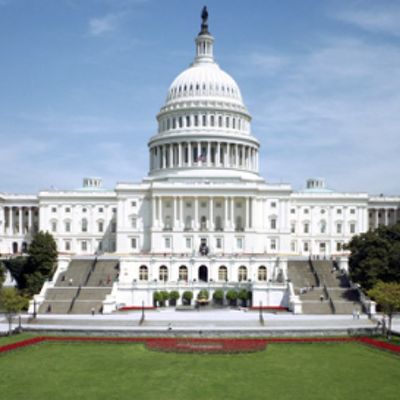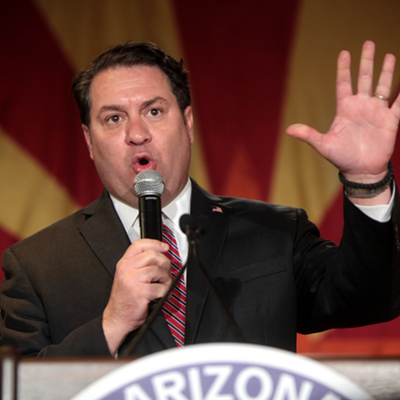Historic Mistake
Developers push to plant four-story apartment building in the heart of two downtown historic neighborhoods
It appears the wrecking ball will soon be swinging at the Downtown Motor Hotel, a shuttered and deteriorating motel on Stone Avenue south of Broadway.
In its place will rise a four-story apartment building for low-income residents, funded with tax dollars.
This is not good news for the residents of two historic neighborhoods that surround the project: Armory Park and Barrio Viejo (aka Barrio Libre or Barrio Historico—the area has known by different monikers, depending on who you talk to, but it's the neighborhood west of Stone Avenue and south of the Tucson Convention Center).
The Downtown Motor Hotel, designed by famed Tucson architect Josias Joesler, is undeniably in rough shape, but we've seen other historic properties restored to their former glory. The Ghost Ranch Lodge on Miracle Mile—another Joesler property that had fallen into disrepair—was restored and now serves as low-income senior housing. Last week, the project won National Development Council Academy Award.
And just down the street from the Downtown Motor Hotel, the Downtown Clifton is a recently restored and reopened motel that serves as an excellent example of adaptive reuse.
But the developers of the Downtown Motor Hotel—including the locally based Compass Affordable Housing, whose CEO Maryann Beerling did not return a phone call from the Weekly—just want to demolish most of existing structure and put up a four-story hulk in the midst of two historic neighborhoods. The plans do call for preserving the front office and the sign of the motor hotel.
State and local officials have not demonstrated much concern about the impact on the historic neighborhoods. Last year, the Weekly reported that state officials were helping the developers draft reports to sidestep historic preservation concerns and mocking Joesler's work in Tucson.
As unfortunate as the loss of Joesler-designed motor hotel is, architect Jody Gibbs said he's more concerned about the how having a four-story apartment in the neighborhood will affect the historic nature of the area.
Tucson Historic Preservation Officer Jonathan Mabry told the Weekly that he is going by the federal rules when he determined that the proposed four-story building was "compatible" with the surrounding neighborhood in "size, scale and massing."
But architect Jody Gibbs, who has gathered a trove of information about the nearby buildings, said that putting in a four-story apartment will "completely change the context of the historic zone."
Gibbs explained that many residents of historic neighborhoods put in a lot of their own money and time to maintain their homes and agree to certain limitations of how they can use their property in order to maintain historic integrity. Dumping a giant apartment into such neighborhoods makes them wonder why they bother.
"If this monstrosity gets built, everyone in Armory Park and Barrio Historico will say, 'Hold it. We bought property under the understanding of the laws that protect historic zones.' This is damaging the districts where people have made a lot of investment."
Demion Clinco, the executive director of the Tucson Historic Preservation Foundation, called the whole process "disappointing." He noted that the city has made little effort to let nearby property owners participate in the planning process required by federal regulations.
Clinco said it was especially unfortunate because the project—which will cost about $10 million—is being funded with public dollars. The bulk of the funding is coming through federal tax credits, but the city of Tucson is kicking in about $600,000 in federal Housing and Urban Development funds.
"Is it good public policy for the city to use these discretionary federal funds to help subsidize the demolition of a historic building?" Clinco asked. "This is arguably the most important historic district we have in the city. It is remarkable architectural environment that is unique."
Post Busters
The city's mail-processing center will not close next month
The Cherrybell Post Office got another stay of execution last week when the U.S. Postal Service announced that it was delaying plans to consolidate operations until 2016.
Democratic Congressman Raul Grijalva cheered the decision, saying that "any delay gives us time to further make the case that the Cherrybell facility is vital to our community, and an unacceptable cut as USPS consolidates across the country."
Congresswoman Martha McSally called the decision "welcome news for Southern Arizonans who depend on this facility, but we still have work to do. Veterans, seniors, and people across our district rely on Cherrybell for prompt mail delivery and other needs."
Tucson City Councilman Richard Fimbres, who has been fighting to keep the post office alive since the closure was first announced in 2011, said that closing the center would be a disaster for Tucson with the loss of 300 direct jobs, slower mail delivery, problems for seniors, veterans and others who receive their medication in the mail, delays in the timely delivery of mail-in ballots at election time, and even a potential economic development hit because businesses might decide against locating in Southern Arizona when they learn there is no center to process mail.
Fimbres said his office would continue fighting until Cherrybell was taken off the list of postal centers that are slated for closure and Tucson got back some of the processing services that have already been moved to Phoenix. As it now stands, letters mailed in Tucson now get a Phoenix postmark because mail is trucked up there to be sorted.
"We want to get our stamp back," Fimbres said. "We don't want our letters stamped in Phoenix or Denver, Colorado, or Austin, Texas, but from Tucson, Arizona."
RIP, Margaret Kenski
GOP pollster dies at age 71
The Skinny notes with sadness the death of Margaret Kenski, a pollster who got her start with the late Democratic congressman Mo Udall in the early '80s who would go on to do polling for former congressman Jim Koble and former governors Fife Symington, Jane Dee Hull and Jan Brewer, among many other clients.
Kenski also did a series of polls for the Tucson Weekly during the 2006 congressional campaign to replace the retiring Kolbe. She accurately predicted that Gabby Giffords was going to win both the primary and general elections that year and was an absolute joy to work with.
I always learned something new in my conversations with Kenski and will miss having the opportunity to talk politics with her. Condolences to her husband, Hank, and the rest of the family.
Zona Politics with Jim Nintzel airs at 9:30 Sunday mornings on KGUN-9. This week's guests are Pima County Democratic Party Chair Cheryl Cage and Pima County Republican Party Chair Bill Beard.












